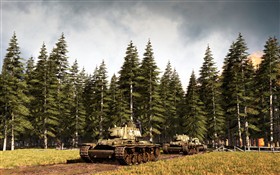
|
The Continuation War
Updated Aug 13, 2010 by
kenwas
Zoom view suggested
During the summer and autumn of 1941, the Finnish Army was on the offensive, retaking the territories lost in the Winter War. The Finnish Army also advanced further, leading to the occupation of Russian East Karelia (it has never been part of Finland). This caused Great Britain to declare war on Finland on December 6.
On July 31, 1941, the United Kingdom launched raids on Kirkenes and Petsamo to show support for the Soviet Union. These raids failed.
In December 1941, the Finnish Army took defensive positions, which led to a long period of calm on the front lines, lasting until 1944. There were various attempts at peace agreements none of which were successful.
On March 16, 1941, the President of the United States, Franklin D. Roosevelt, called for Finland to disassociate itself from Nazi Germany.
On June 9, 1944, the Red Army launched a massive attack against Finland. The fact that the army had vast numerical superiority and had managed to surprise the Finnish Army, led to a retreat by Finland to the same positions they had been holding at the end of the Winter War. Eventually this massive attack stalled still far away from the main Finish line of defense fortifications, the Salpa Line.
By this time the Finnish front had become a sideshow for the Soviet leadership as they were in a race to reach Berlin before the Western Allies. This, and the heavy casualties inflicted on the Red Army by the Finns, led to the withdrawal of most Soviet troops from the Finnish Front (depicted in this scene). On September 4, 19445 a cease-fire was agreed, and the Moscow armistice was signed on September 19. In this agreement Finland was obliged to expel all German troops from within its borders. This led to the Lapland War.
Vue 8.5 Infinite
The zip includes 1920x1200, 1680x1050, 1440x900, 1280x800, 1600x1200, 1280x960, 1024x768
|
![]()
![]()























































Comment #1 Friday, August 13, 2010 1:28 AM
The coloring on this is so nice. It looks so natural!